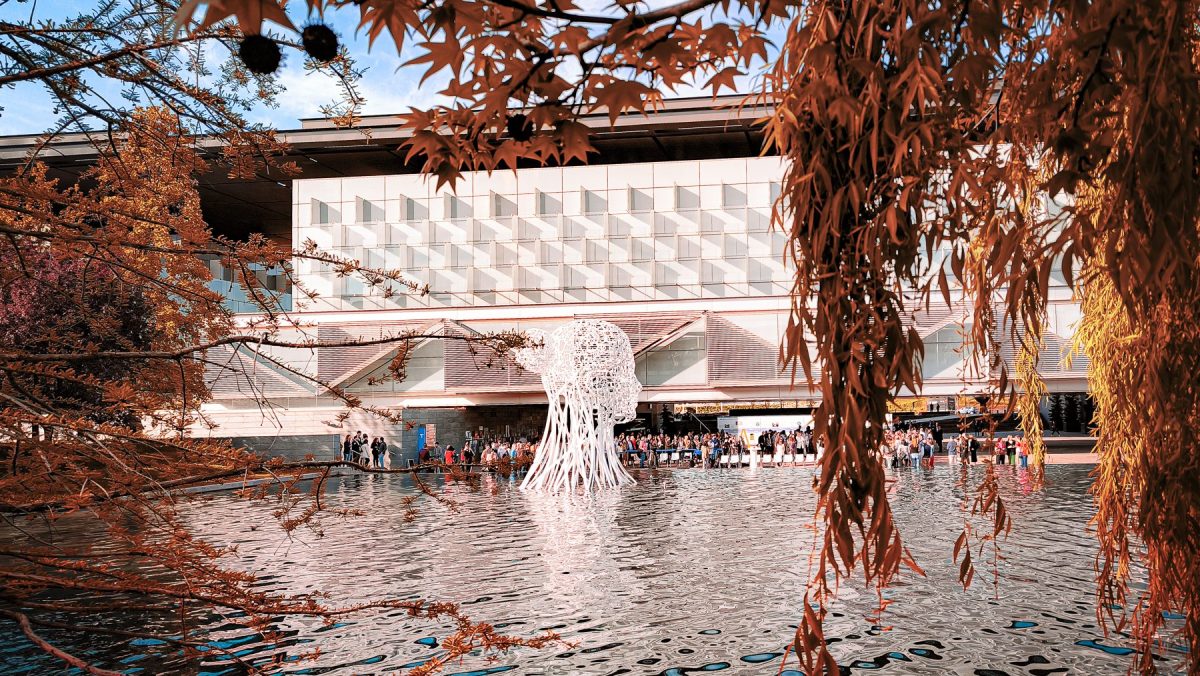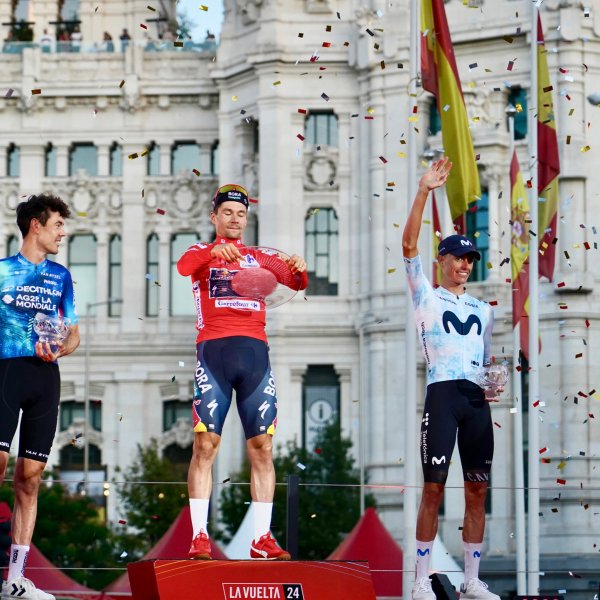In the Telefónica District we find a great biodiversity of animals. We will be describing them from the less visible ones such as annelids to the more visible and audible ones such as birds.
There are more than 10,000 species of birds worldwide, of which more than 350 species can be seen in our country.
Birds stand out mainly for their ability to fly, although not all of them do. Flight is a mechanism to escape from predators, to hunt prey, to move more easily by air than by land…, in short, to open up new ecological niches.
Types of birds
From the mallard duck (which walks, swims, dives and flies) to the swift common plane flying over the water of the pond, to the sparrows that eat next to us in the cafeterias… we can assure you that in the Telefónica District you can see and hear at least 20 species:
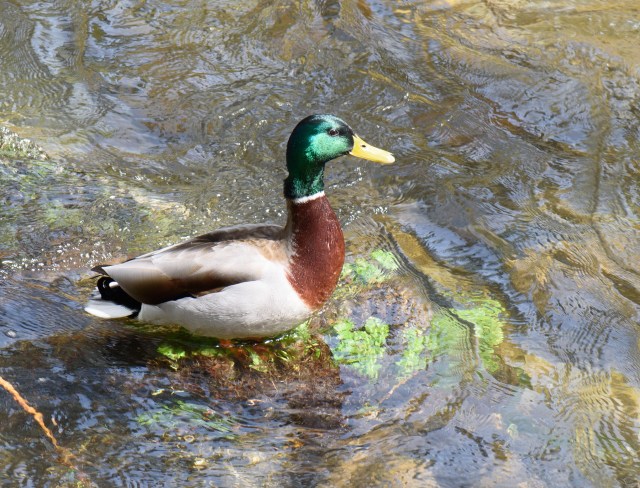



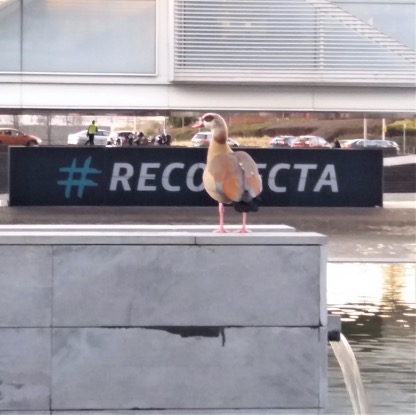
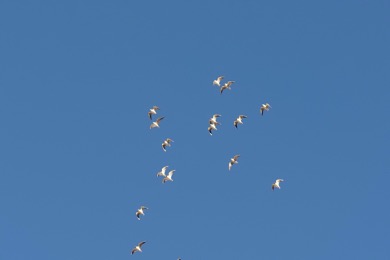
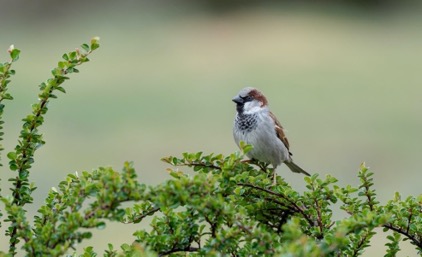
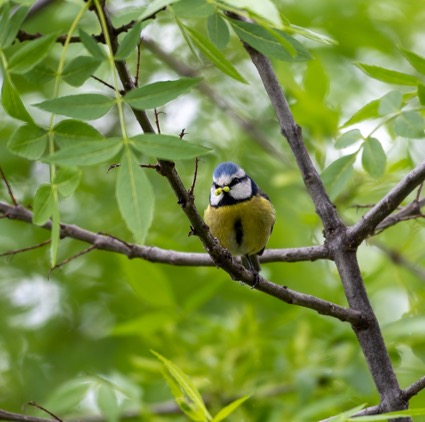
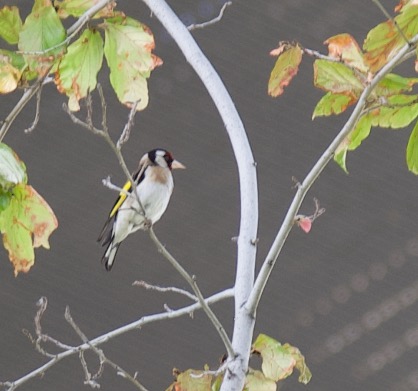
Mallard(Anas platyrhynchos)
This is the most common duck in our country. It has great sexual dimorphism. The female has a brownish brindle colour. The male has a green head and neck, yellow bill, white collar and dark brown breast.
Intermediate in size between those of a goose and a duck. Predominantly brown in colour with brown patches around the eyes and on the lower part of the breast.
Redfish(Gallinula chloropus)
Medium-sized waterfowl with a narrow body and black plumage. The bill is bright red with a yellow tip. It has an enormous capacity to adapt to any environment due to its flexible diet ranging from aquatic plants to carrion.
Gulls in the Telephone District
Every autumn thousands of seagulls (up to 18 different species) come to our Community of Madrid to spend the coldest months of the year. But why is this if, as we all know, there is no beach in Madrid? The answer lies in the landfills. Every day the seagulls move between their resting areas (reservoirs and gravel pits) and the landfills of Pinto, Valdemingómez or Colmenar Viejo. Many follow the course of the Manzanares river, but others shorten their journeys by crossing the middle of Madrid and on many occasions they can be seen above Distrito Telefónica. Example in photos.
Black-headed Gull(Chroicocephalus ridibundus)
This is a small-sized gull, with a characteristic chocolate-brown hood, present only in breeding plumage. The bill is a deep blackish red.
Lesser Black-backed Gull(Larus fuscus)
This is a large gull with a very dark back. The final plumage of these birds is completely white on the ventral regions and a deep grey on the dorsal regions, while the legs and bill are bright yellow.
Domestic Pigeon(Columba livia)
Medium-sized, compact body. Orange eyes with small dark bluish-grey head. Neck incandescent green or violet. With a dominant greyish colouration, it has a purplish gradient on the breast and two black wing bands. The wild pigeon is the wild ancestor of the domestic pigeon. The domestication of pigeons dates back 7,000 years.
Wood Pigeon(Columba palumbus)
Robust body with greyish colour, prominent robust pinkish breast and proportionately small head. Light yellow eyes and nape with green highlights. The white patches on the neck and wings are characteristic and easily recognisable.
House Martin (Delichon urbicum)
Small swallow with a compact appearance, shiny bluish-black above and white below. They can be seen flying over the pond hunting for insects and drinking water.
Argentine Parakeet (Myiopsitta monachus)
Native to South America, the Argentine Parakeet is quite popular as a cage bird, which has led to its expansion due to deliberate escapes or releases.
White Wagtail ( Motacilla alba)
A stylised bird with a very distinctive appearance, with a long tail and shades of white, black and grey.
Robin ( Erithacus rubecula)
Notable for its orange breast against greyish-white plumage. With large black eyes and a short, sharp bill.
Blackbird(Turdus merula)
Males deep black with a vivid orange bill and eye ring. Females have a brownish plumage. The Beatles dedicated a beautiful ballad “Blackbird” to this bird.
Common Chiffchaff(Phylloscopus collybita)
This is a small bird with a thin bill and dark legs. It has greenish or greyish-brownish tones on the back and whitish on the underparts. It is very restless and is one of the most common birds in Europe.
Blue Tit (Parus caeruleus)
An active and noisy insectivore. It has a distinctive cobalt blue crown with a white rim and a narrow black stripe across the eyes to the back. The cheeks are white.
Great Tit(Parus major)
One of the most abundant birds in forests, parks and gardens. It is an insectivorous bird that is easily recognisable by the yellow colour of its body, which contrasts with the blue of its wings and tail.
Magpie (Pica pica)
Possibly one of the best known birds in the District. Large head and strong bill. With its characteristic black and white plumage and green and lilac iridescence in the sun.
House Sparrow (Passer domesticus)
They are the closest to us, especially in the cafeterias of every square, as they have become accustomed to picking up the food we leave on our plates. It was chosen bird of the year in 2016 partly because its population has been declining in recent years. In our country, according to data from the SACRE monitoring programme of SEO/BirdLife in 2017, the population has fallen by 12.5%, which gives a figure of around 9 million fewer sparrows in the last 20 years.
Chaffinch(Fringilla coelebs)
Similar in size to a sparrow, from which it is well distinguished because both females and males have a conspicuous white patch on the shoulder that is very visible in flight.
Serinus serinus (Serinus serinus)
This is a small bird with a broad but very short bill. Both females and males have a yellowish-white breast and belly, with spots or short vertical stripes.
Greenfinch(Chloris chloris)
This species is referred to as the “green sparrow”. It has a large head with a broad, strong beak. Its plumage is emerald green, with yellow patches on the shoulder, wing feathers and tail.
Goldfinch (Carduelis carduelis)
It has one of the most beautiful plumages of all birds. On its head it has a characteristic red mask, together with black and white patches. The wings are a combination of yellow and black.
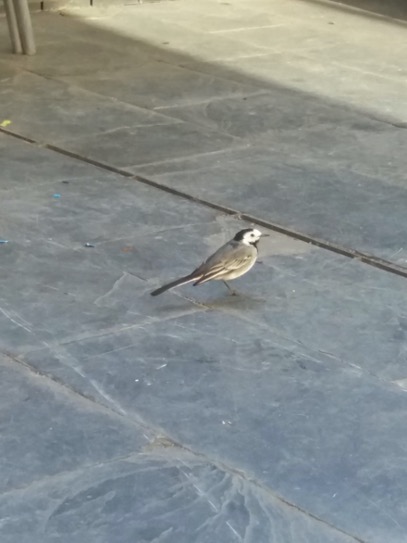
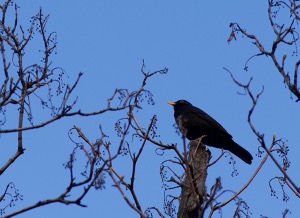
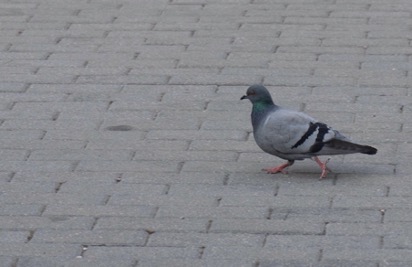


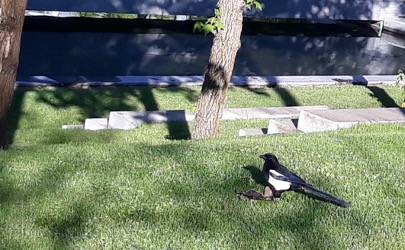

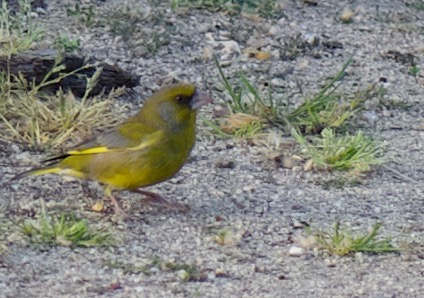
(Cover photo by Roberto Valentín and inpost photos by Álvaro Martín)
